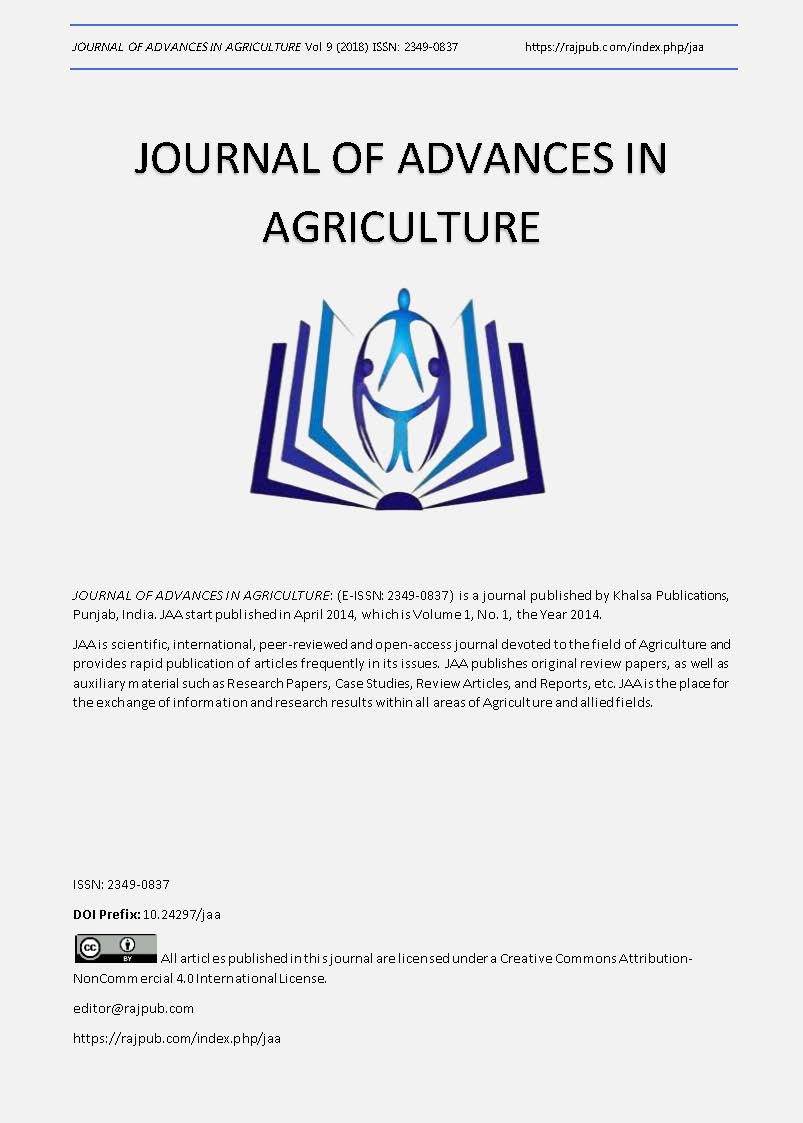Effects on Soybean Growth and Yield of Wheat-Soybean Intercropping System
DOI:
https://doi.org/10.24297/jaa.v9i0.7906Keywords:
Intercropping, Stress, Growth, YieldAbstract
It has been demonstrated that soybean (Glycine max) produces lower yields at relay intercropping with wheat (Triticum aestivum) than if it is sown as a sole crop. However, most studies considered wider or irregular soybean row spacing, compromising its capacity to recover after wheat harvest. This work studied the stress effects in relay soybean intercropping and suggests narrowing row spacing to improve soybean performance. The aims were (i) to compare growth and yield of two planting patterns and (ii) to separate the effect of water stress (WS) from the effects of other stress factors (OSF) induced by wheat on intercropping soybean. WS was evaluated comparing above-ground dry and grain yield of irrigated and non irrigated intercropping soybean, and OSF was evaluated comparing intercropping soybean with another treatment in which wheat straw (aerial biomass) was eliminated at soybean emergence, both irrigated treatments. In wheat, similar yields were obtained in treatments with an intercropping planting pattern with two rows for wheat and one for soybean (2:1) compared to three rows for wheat and one row for soybean (3:1). However, intercropping soybean at narrow row spacing (52 cm; 2:1) improve yielded 23% more than intercropping at 70 cm (3:1). During wheat-soybean coexistence, OSF prevailed on soybean and this effect persisted in later stages. After wheat harvest, OSF reduced the amount of light interception from R1 to R5 and depressed the crop growth rate (CGR) in 34%. However, in this period, WS also affected the radiation use efficiencies (RUE) which explained the greater fraction (66%) of the total stress induced by wheat in soybean CGR. Intercrop soybean yielded 182 g m-2 less compared to the unstressed sole crop control. Considering the wheat effects on soybean growth, 63% (116.5 g m-2) of the total yield lost were due to WS. Therefore, most of the performance of relay intercropping soybean was linked with water disponibility since early stages. However, at optimum water condition wheat competition by light and resources also affected soybean yield (OSF: 37%).
Downloads
Downloads
Published
How to Cite
Issue
Section
License
 All articles published in Journal of Advances in Linguistics are licensed under a Creative Commons Attribution 4.0 International License.
All articles published in Journal of Advances in Linguistics are licensed under a Creative Commons Attribution 4.0 International License.




